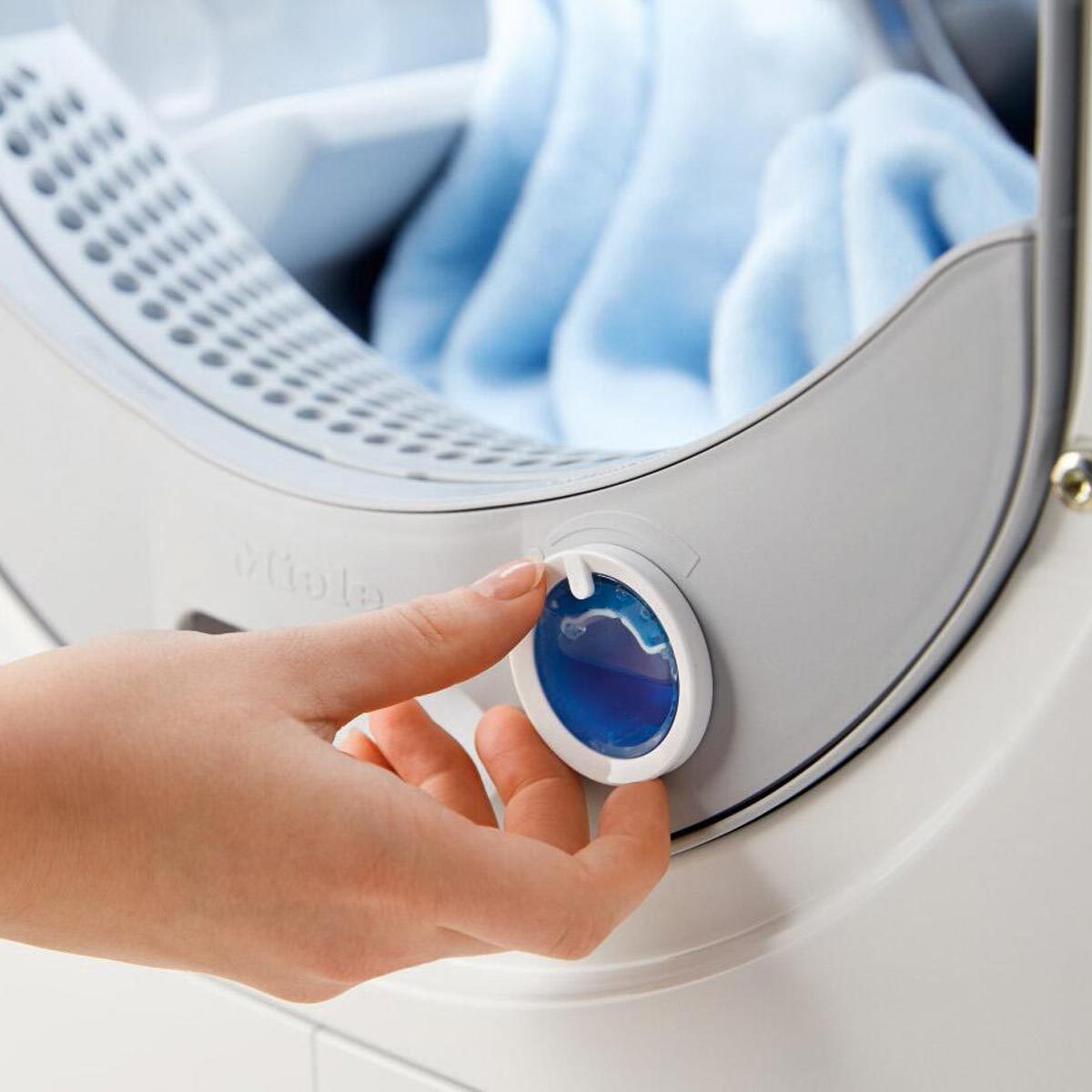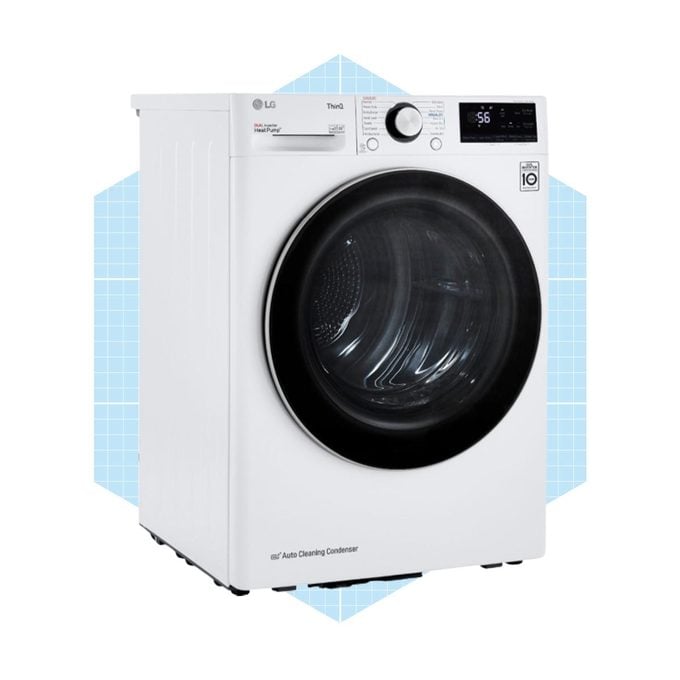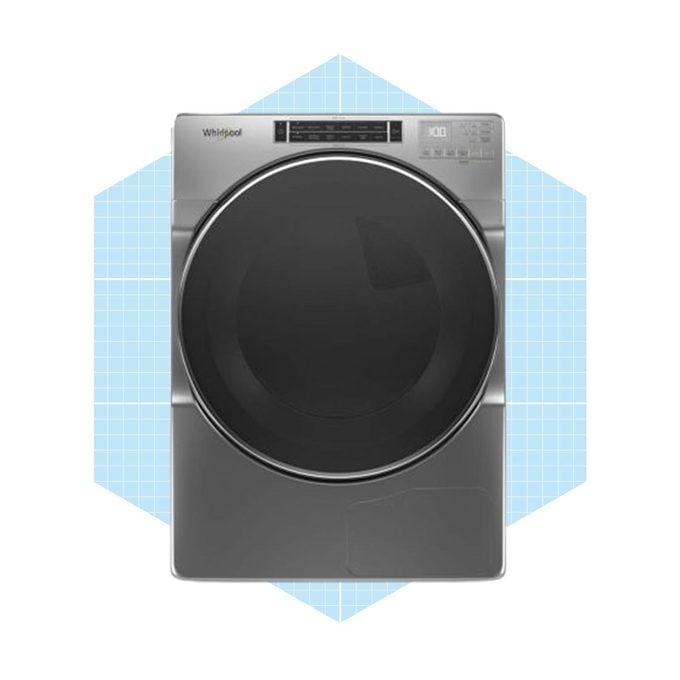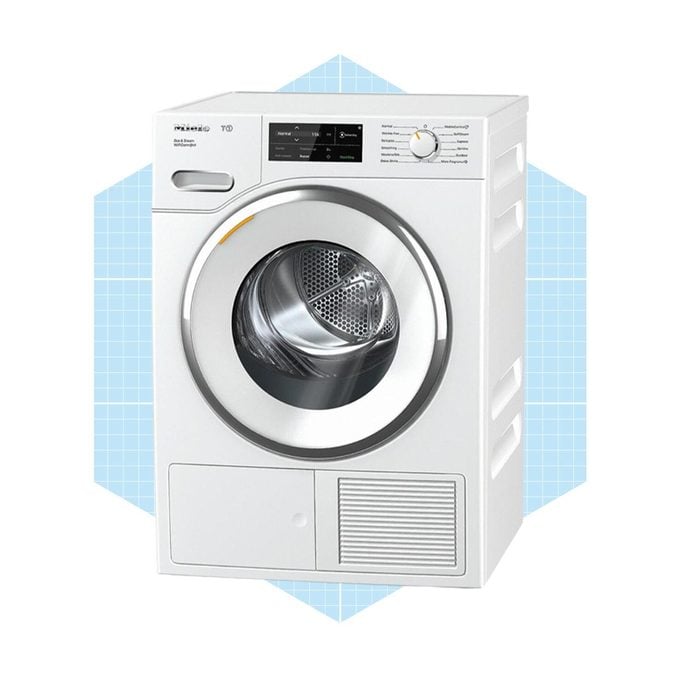Heat pump dryers are recent crossovers from the European to the North American market. They're energy-efficient, compact and ventless.

What To Know About Heat Pump Clothes Dryers

Heat pump technology makes air conditioners and refrigerators work, so it isn’t new. But some of its applications are.
Residential heat pump systems, which may replace gas and resistive heat furnaces over the next 10 years or so, have been around only since the 1990s. Heat pump water heaters are a more recent development. They account for about 1% of water heater sales in 2022, a number that will probably grow.
Heat pump clothes dryers are also new, at least to North America. Developed in Europe in the 1990s and widely used there since 2007, they were introduced to the American market in 2014. As of 2022, they claimed 2% of the market share for dryers.
Also known as ventless dryers, heat pump dryers are electric dryers that have a number of advantages over traditional vented dryers, the lack of a vent being one of the most obvious. They do have drawbacks that could stand in the way of their popularity; we’ll get to those in a minute. But one powerful force pushes in the opposite direction — government policy. Before you move ahead, get to know the difference between gas and electric dryers.
States like California want to reduce reliance on fossil fuels for residential use, and the federal government actively promotes heat pump technology as an energy-efficient alternative. Vented dryers have been illegal in Switzerland since 2012. Similar bans could be on the horizon elsewhere, including North America.
On This Page
What Is a Heat Pump Clothes Dryer?
One that dries clothes without an exhaust vent to the outside.
It features a tumbler like a conventional dryer. But instead of blowing hot air over the clothes and dispersing that air outside through a duct system, a heat pump dryer recycles the air. It warms it in the tumbler, then condenses the moisture into water via evaporative cooling. That water then drains through a tube. For this reason, it’s also known as a condensing dryer.
Besides the tumbler, the main working parts are a compressor (much like the one in an air conditioner or refrigerator) and coils, where a refrigerant cycles between liquid and gaseous states. Unlike conventional dryers, heat pump dryers do not require ventilation, so they can be installed anywhere in a home or apartment, whether it is a stacked washer and dryer or a side-by-side installation.
How Does a Heat Pump Dryer Work?
The refrigeration system in a heat pump dryer works like a dehumidifier. It’s driven by a compressor, which pressurizes a refrigerant in one set of coils to release heat. The pressurized refrigerant sprays through an expansion valve into another set of coils, where it turns into a gas. Because evaporation absorbs heat, the coils are always cold.
Air that enters the dryer through the intake port warms as it circulates past the condenser coils. Because it’s warm, it can absorb moisture from the tumbler. It then goes out of the tumbler and passes the evaporator coils, where it cools.
Cold air holds less moisture than warm air, and the excess moisture precipitates out and drips into a pan that can be emptied manually or connected to a drainage tube. The cooled air circulates back over the condenser coils and starts the cycle over again.
Benefits of a Heat Pump Dryer
Heat pumps dryers have many advantages over conventional ones:
- Less expensive to operate: Energy Star reports heat pump dryers are 28% more efficient than conventional dryers.
- Ventless: There’s no need to punch a hole in the wall for a vent. This eliminates the danger of lint buildup in the dryer vent, which can cause fires. It also means you can put a heat pump dryer almost anywhere. That’s important in apartments where venting isn’t possible.
- Safer for clothes: A heat pump dryer operates at a lower temperature than a conventional one, so it’s easier on your clothes.
- Eco-friendly: Because they use less energy than conventional dryers, heat pump dryers are better for the environment.
Drawbacks of a Heat Pump Dryer
The list of drawbacks is slightly longer than the list of benefits:
- Smaller capacity: Although manufacturers are working to change this, heat pump dryers tend to be smaller than conventional ones. Drum capacities of four cubic feet are typical, compared to seven cubic feet for conventional dryers.
- Longer drying time: A heat pump dryer takes from 15 to 30 minutes longer to dry a load.
- Needs more maintenance: All that lint has to go somewhere. Most of it is captured by filters that need cleaning. But some collects on the condenser and evaporator coils, which also need to be cleaned periodically. In the absence of routine cleaning and maintenance, many problems can arise, including longer drying times and more costly dryer repairs.
- Can get moldy: Water is constantly generated while the dryer is running. If any drips on the floor under the dryer, mold can become a problem.
- More expensive: Perhaps the biggest drawback is the price, about twice that of a conventional dryer.
Best Heat Pump Dryers
Heat pump clothes dryers, more commonly marketed as ventless dryers, are available at big box appliance outlets everywhere. Here are three of the best.
Best budget

The Energy Star certified LG Stackable Smart Dryer features 4.2 cubic feet capacity and Wi-Fi capability that lets you monitor the progress of the drying cycle from an app on your mobile device. A compact 24 inches square and 33 inches high, it easily fits in most closets. It plugs into a standard 120-volt outlet and runs quietly.
Best splurge
The Miele TRX860WP, also Energy Star certified, gets great reviews online. This is also a closet-sized unit with Wi-Fi capability that plugs into a 120-volt outlet. But what sets it apart is the SteamFinish feature, which blasts your clothes with steam to remove wrinkles at the end of the drying cycle. You can also purchase optional fragrance pods.
Best large capacity

The Whirlpool WHD862CHC offers the same seven-cubic-foot capacity of a conventional dryer. Although slightly larger than smaller-capacity dryers, it still fits into most closets. It’s Energy Star certified with a steam refresh cycle. It runs on 240-volt power and costs a bit more than smaller models.





















